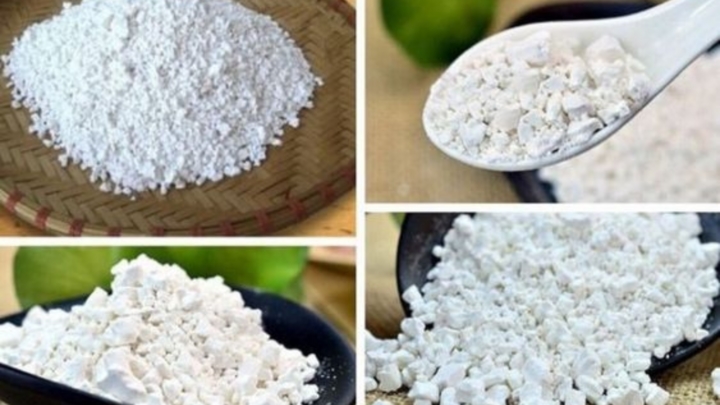In Traditional Chinese Medicine, cassava root is known for its sweet taste and cooling properties. It is used to treat various ailments such as fever, neck and head pain, dehydration, and nosebleeds.
Freshly harvested cassava roots are cleaned, peeled, and cut into segments for cooking or sun-dried to make cassava flour, a popular summer ingredient. Cassava flour is often used to make delicious desserts and beverages that offer cooling and detoxifying properties, as well as improve digestion.
Why You Should Avoid Buying Scented Cassava Flour
To enhance the flavor of cassava flour, some people add jasmine or grapefruit blossoms. However, unless you are making it yourself or are certain that the scented flour you’re purchasing is naturally flavored and produced safely, it is best to opt for the plain variety.
Natural floral scents are usually subtle and can only flavor a small amount of flour. A large quantity of flowers would be required to produce a significant amount of scented cassava flour, and the process is rather intricate. As a result, naturally scented cassava flour is likely to be expensive, and the fragrance tends to dissipate quickly.
To create a more appealing product, many cassava flour manufacturers add artificial fragrances. However, food-grade fragrances that are safe for consumption can be costly, increasing the likelihood of purchasing lower-quality scented cassava flour. Not only might it fail to deliver a pleasant aroma, but it could also pose potential health risks. This is why it is recommended to choose unscented cassava flour, also known as “plain” or “original” flour.

Opt for plain cassava flour instead of scented varieties. (Illustration: Pinterest)
Additionally, if you do purchase scented cassava flour that contains flower petals, it is advisable to use it promptly. The flower petals can attract mold, compromising the quality of the flour.
The Benefits of Cassava Flour
A post on the website of Vinmec International General Hospital highlights the following health benefits associated with cassava flour consumption:
Iron Supplement: Cassava root and its flour are excellent natural sources of iron. A cup of cassava flour provides approximately 13% of the daily iron requirement, helping to combat anemia.
Antioxidant Properties: Research indicates that a cup of cassava flour provides 8% of the daily requirement of manganese, a mineral essential for cholesterol and amino acid metabolism, contributing to the body’s antioxidant defense.
Bone Health: Cassava is rich in calcium, which supports bone and dental health.
Improved Digestion: Cassava flour aids in digestion and enhances the absorption of nutrients.
Tips for Choosing High-Quality Cassava Flour
Color Inspection: Cassava flour produced through a process of grinding, soaking, and multiple filtrations will result in a bright white color and a distinctive aroma. To further test the quality, taste a small amount of the flour. If it melts quickly and smoothly on your tongue, it is likely fresh.
Aroma Examination: High-quality cassava flour has a distinct fragrance reminiscent of the cassava root. Inferior flour tends to have a weaker scent.
Texture Test: When you bite into a pellet of good-quality cassava flour, it should crackle and melt instantly. The edges of the pellet should be sharp, whereas inferior flour pellets have dull edges and tend to crumble rather than melt.
Sediment Check: Mix cassava flour with water and pour the mixture into another cup. High-quality flour will not leave any sediment, while inferior flour will settle at the bottom.
Cooking Test: Mix the cassava flour with boiling water or cook it on a stove. Pure cassava flour will be transparent, allowing you to see through to the bottom of the pot. Inferior flour, on the other hand, will be less transparent and may feel tough and chewy rather than soft.
According to VTC News




































